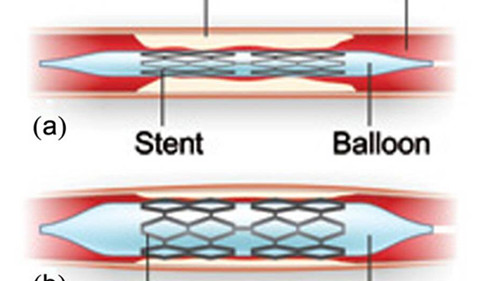Coating Techniques and Release Kinetics of Drug-Eluting Stents
Atherosclerosis is a disease characterized by clogged vasculature due to buildup of fatty substances along the vessel wall known as plaque or atheroma. This condition is a subset of a cardiovascular disease (CVD), the leading annual cause of death, affecting millions of lives worldwide. In the U.S. alone, incidence of cardiovascular procedures has tripled in the last decade and this trend is expected to continue due to the aging population, increasing numbers of obese and diabetes mellitus patients. Treatments for atherosclerosis are necessary to restore blood flow and can include atherectomy (direct removal of the atheroma), angiogenesis (formation of new blood vessels from existing vasculature), brachytherapy (localized radiotherapy), bypass grafting (circumventing blocked vessel with clean vessel from a donor), and angioplasty (reopening of vessel using balloon or stent).

Implantation of drug-eluting stents (DESs) via percutaneous coronary intervention is the most popular treatment option to restore blood flow to occluded vasculature. The many devices currently used in clinic and under examination in research laboratories are manufactured using a variety of coating techniques to create the incorporated drug release platforms. These coating techniques offer various benefits including ease of use, expense of equipment, and design variability. This review paper discusses recent novel DES designs utilizing individual or a combination of these coating techniques and their resulting drug release profiles.
Reprinted from https://www.ncbi.nlm.nih.gov/pmc/
Disclaimer: For reference and exchange purposes only, if copyright and other issues are involved, please contact us for deletion, thank you!
